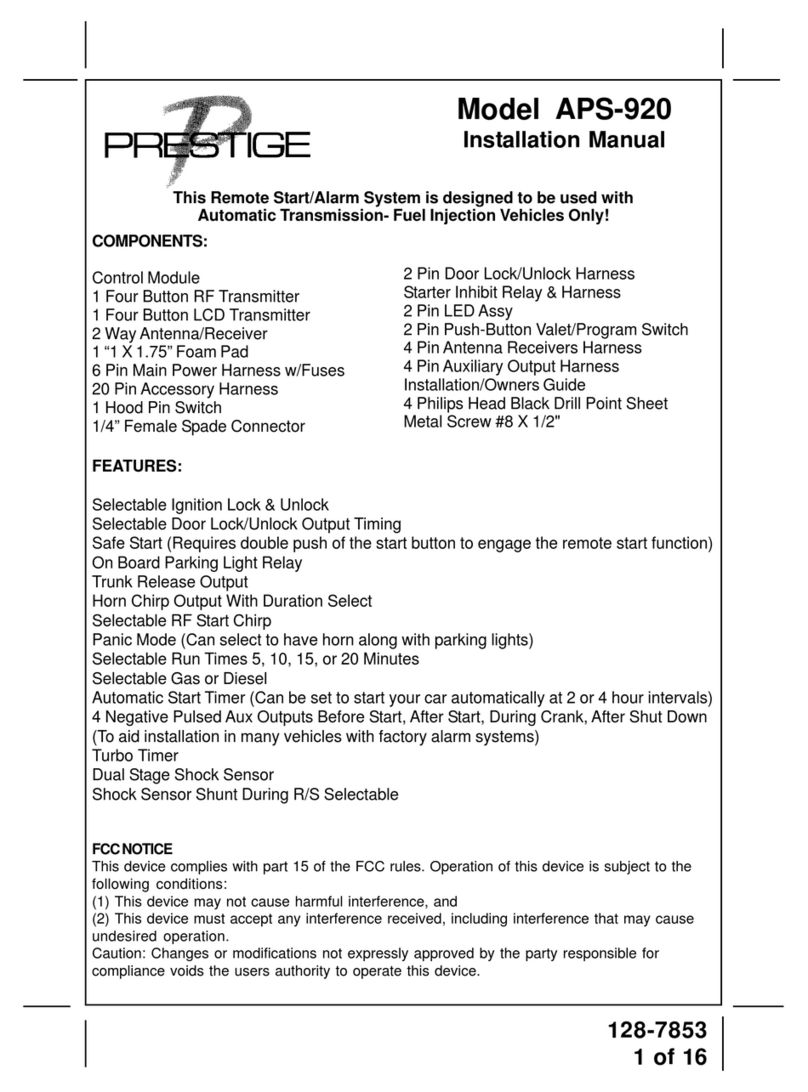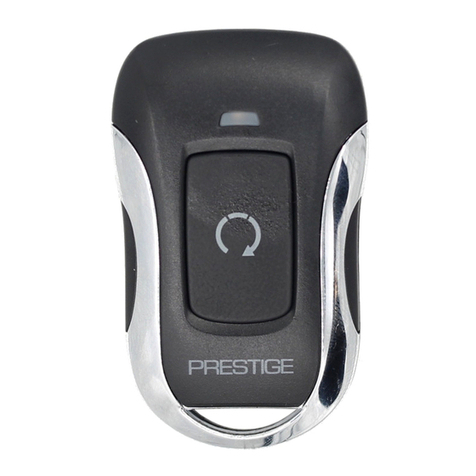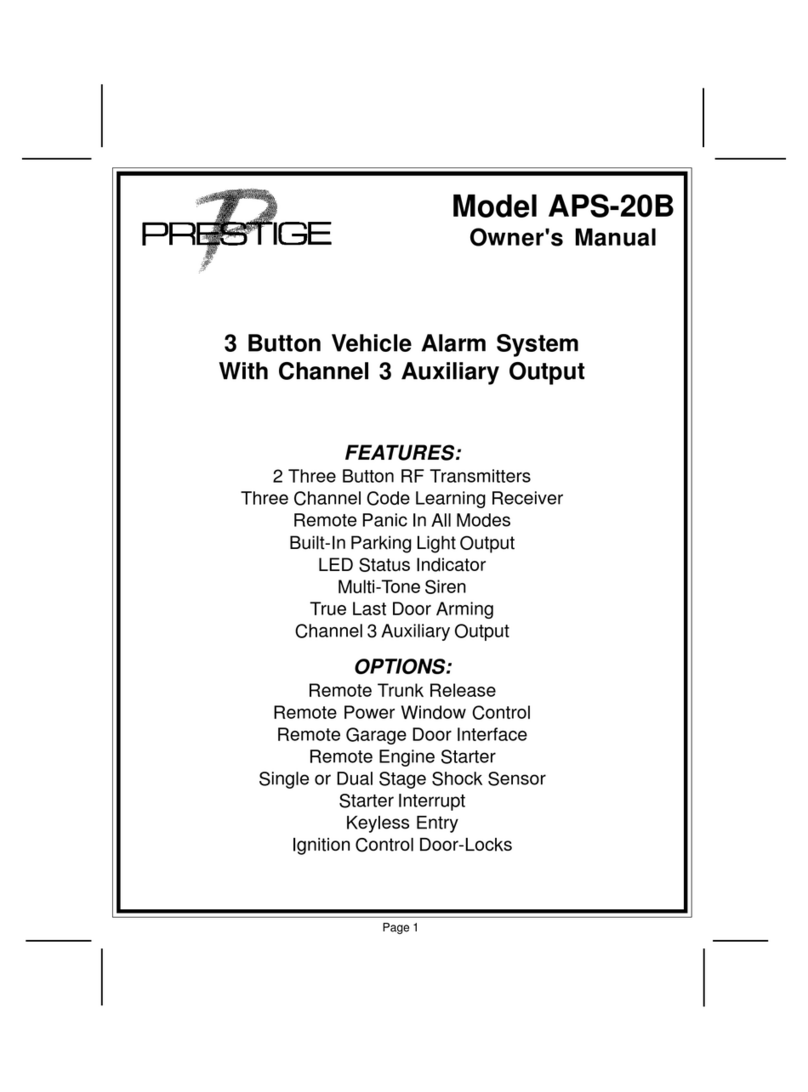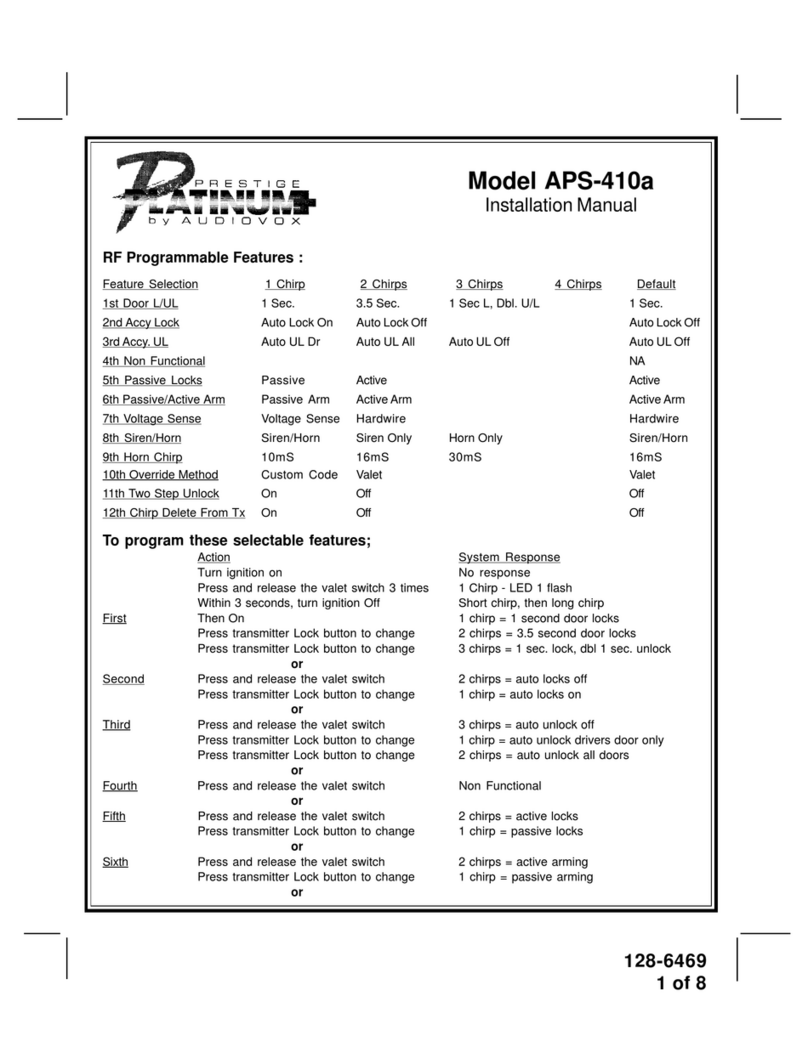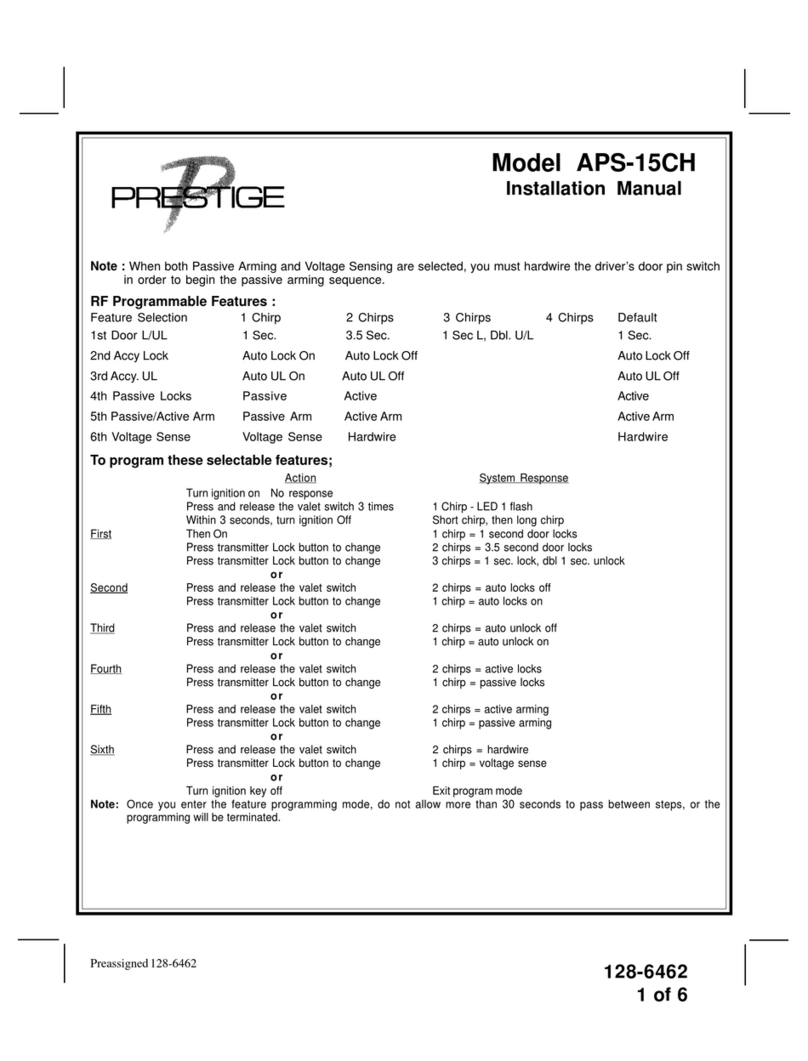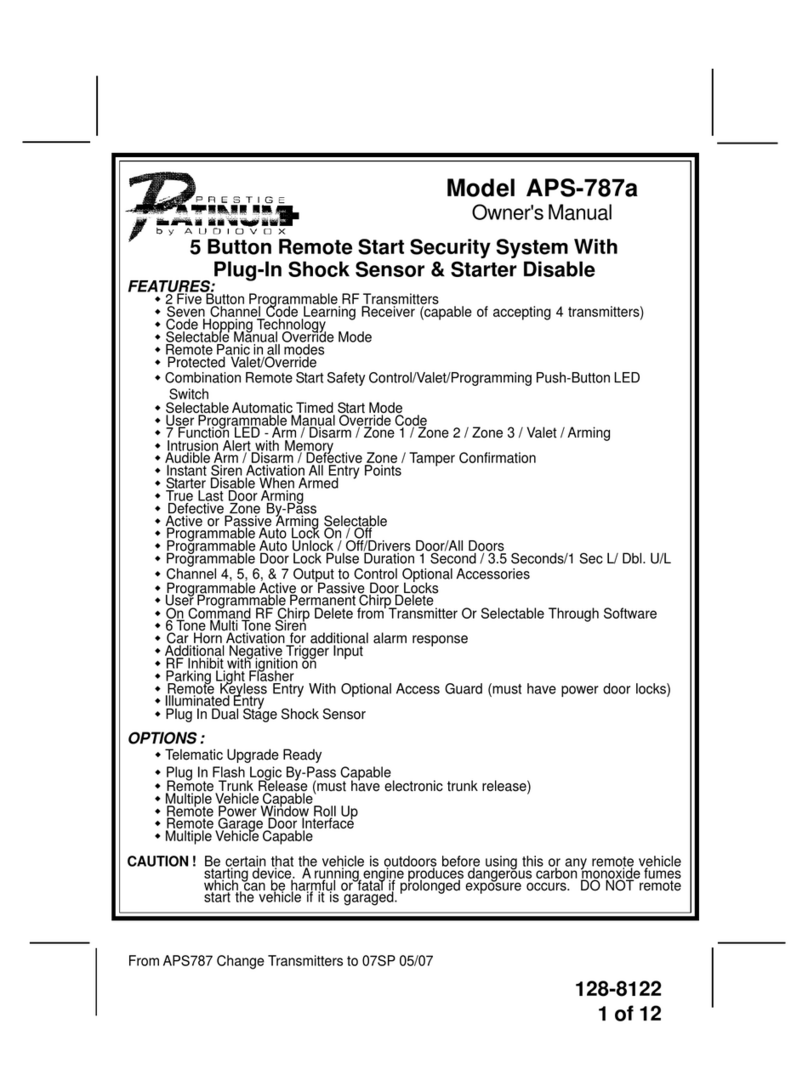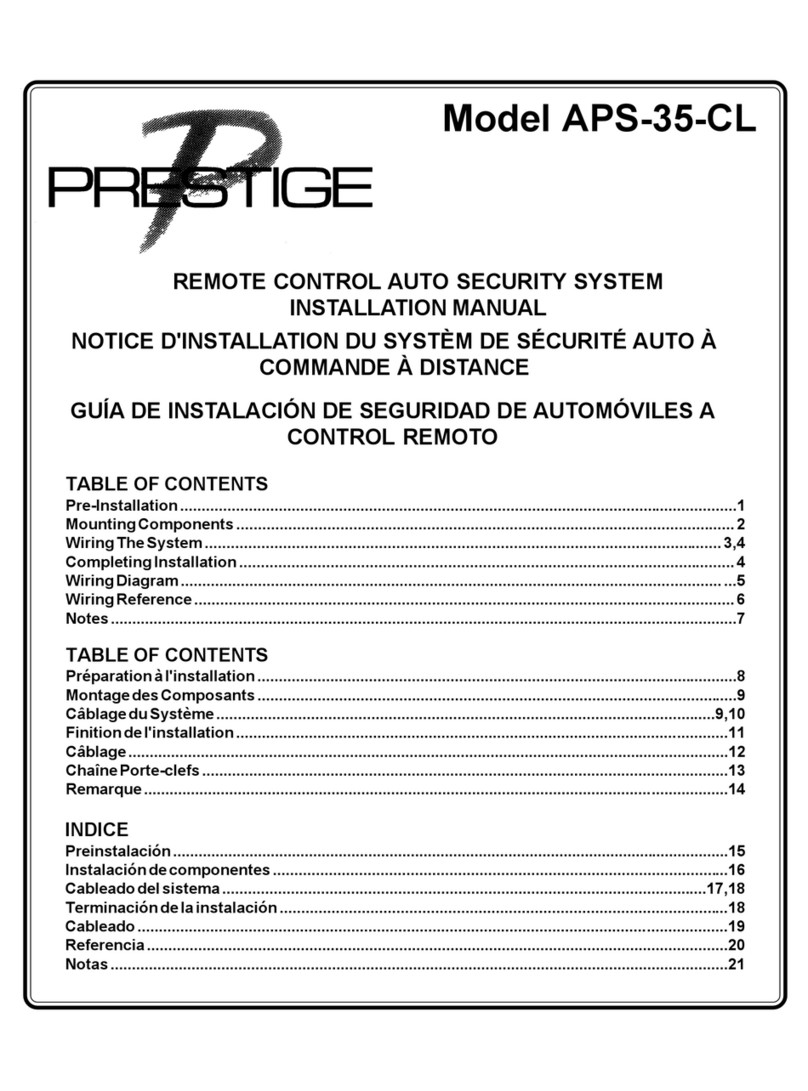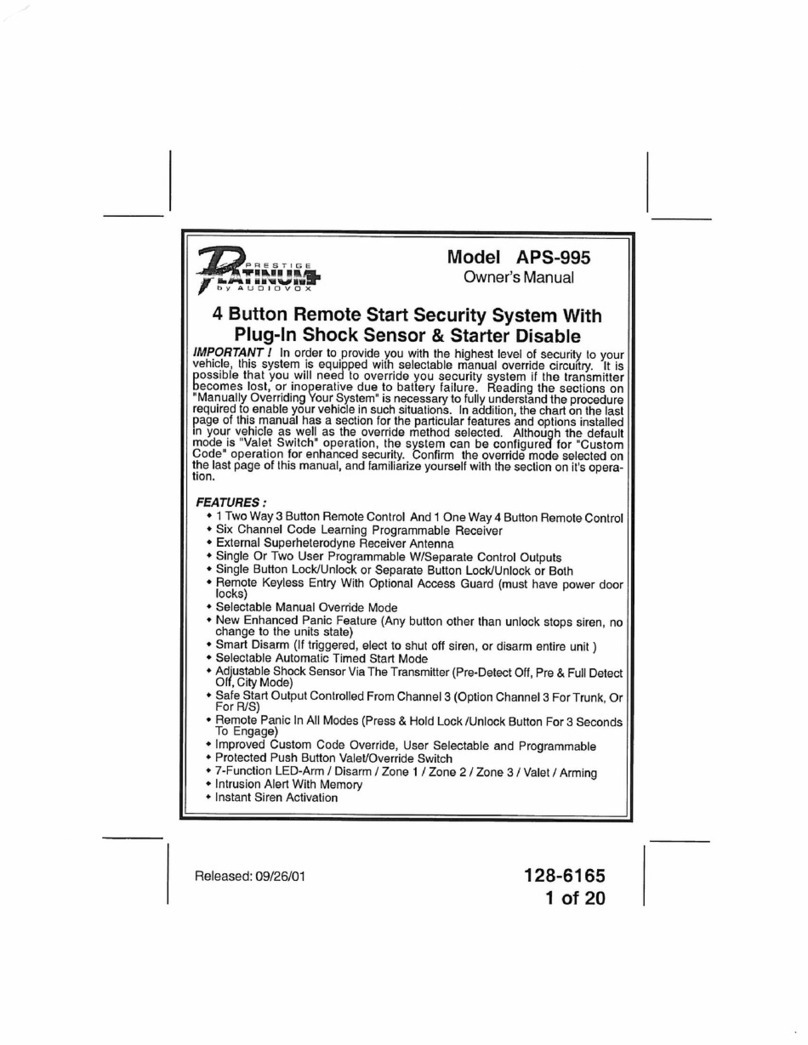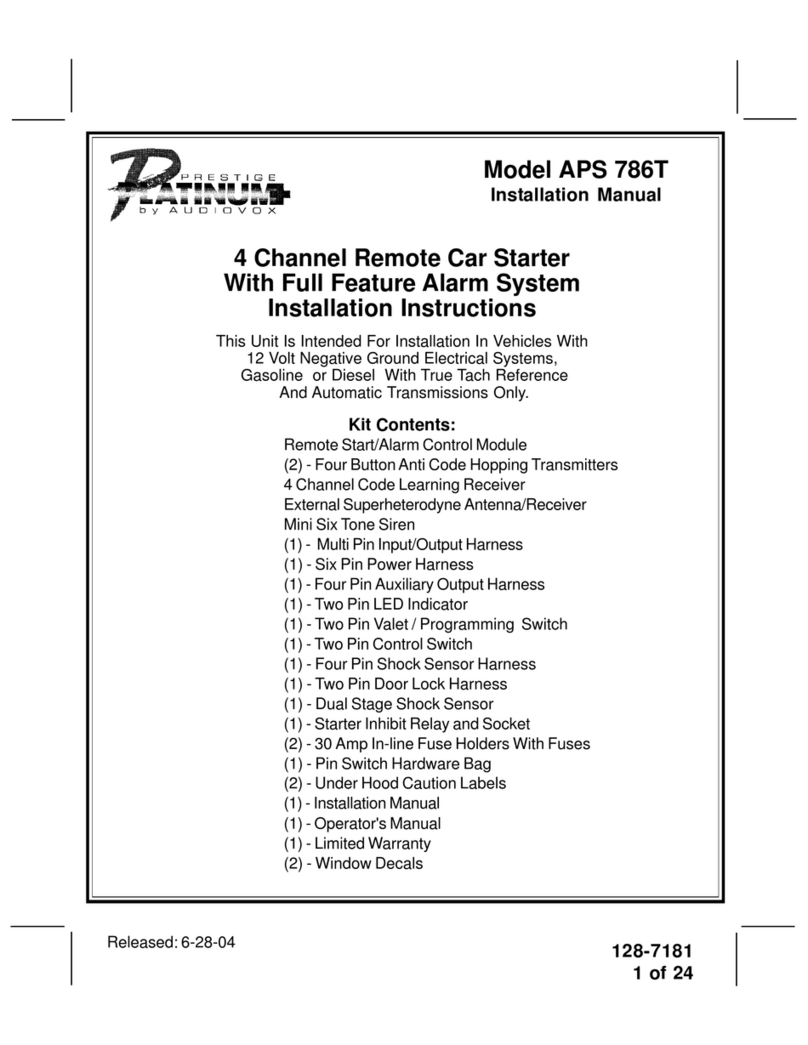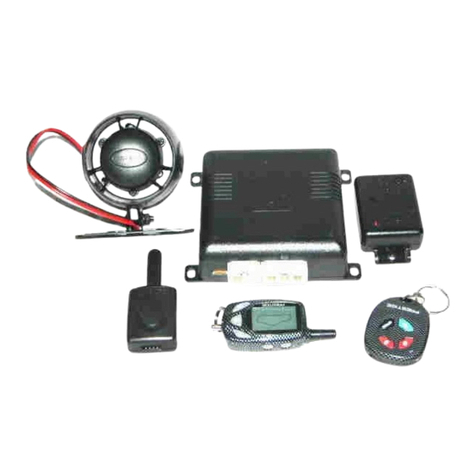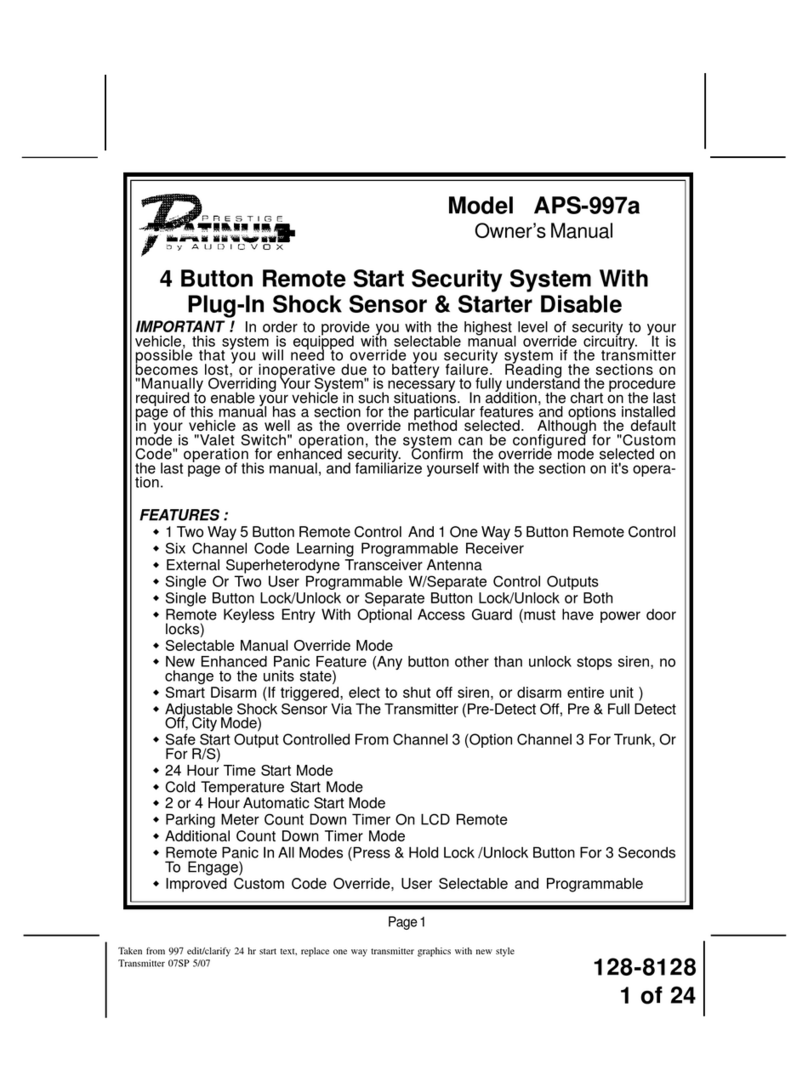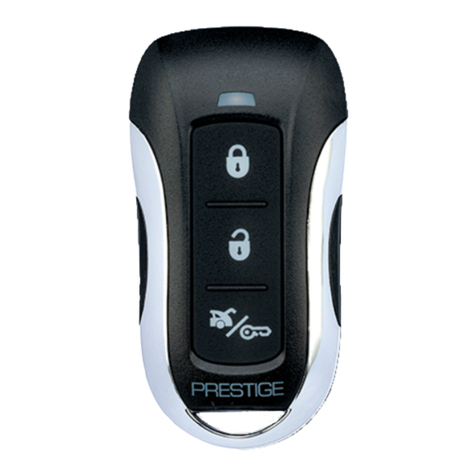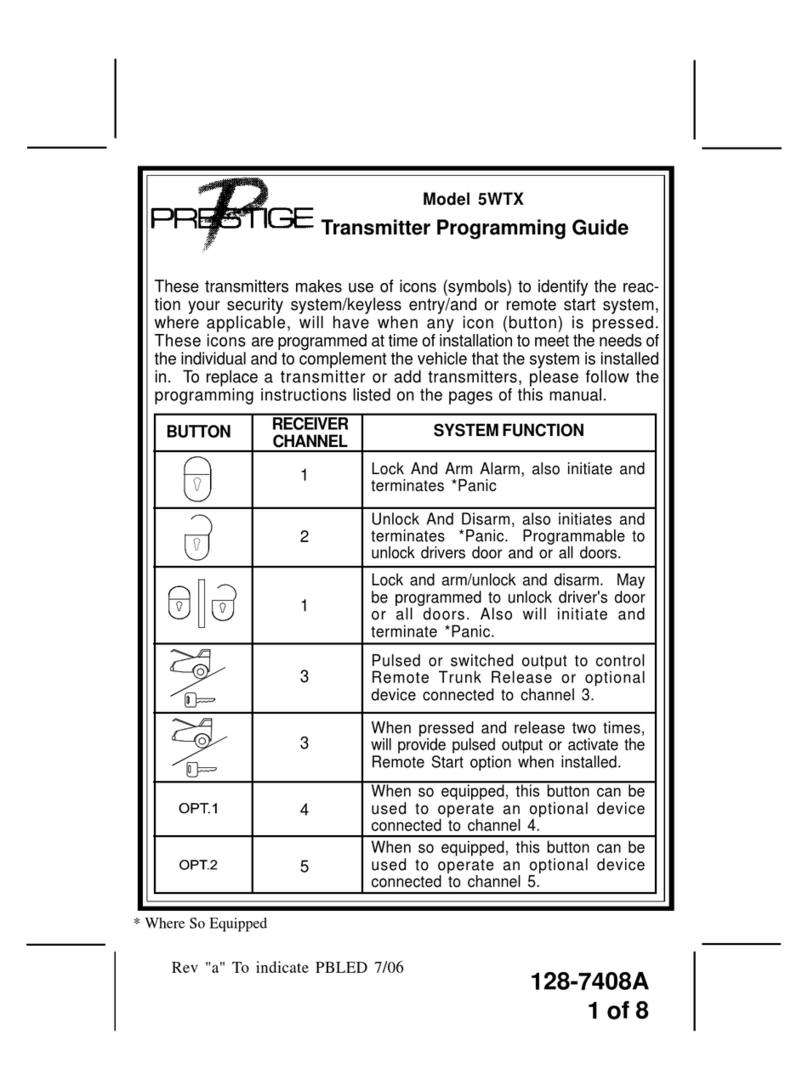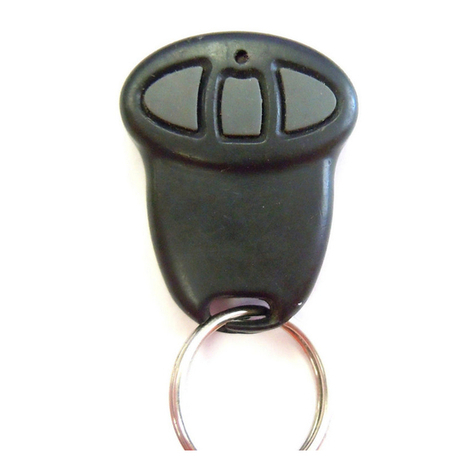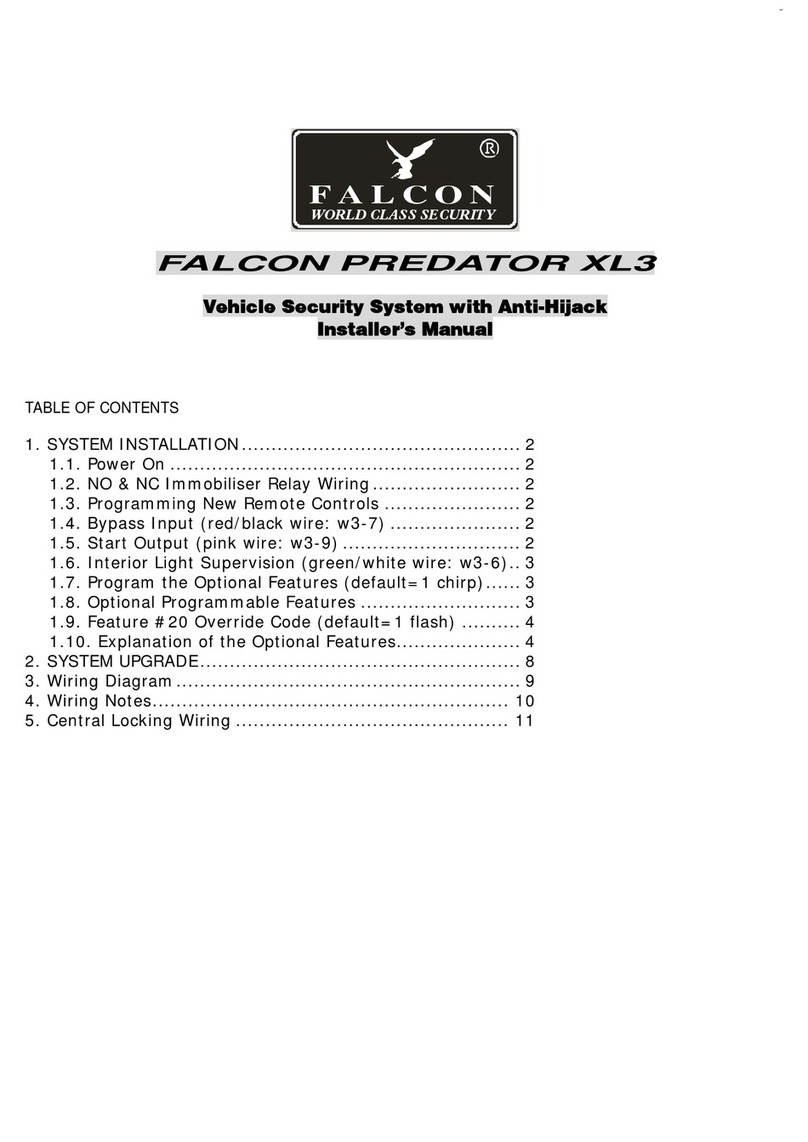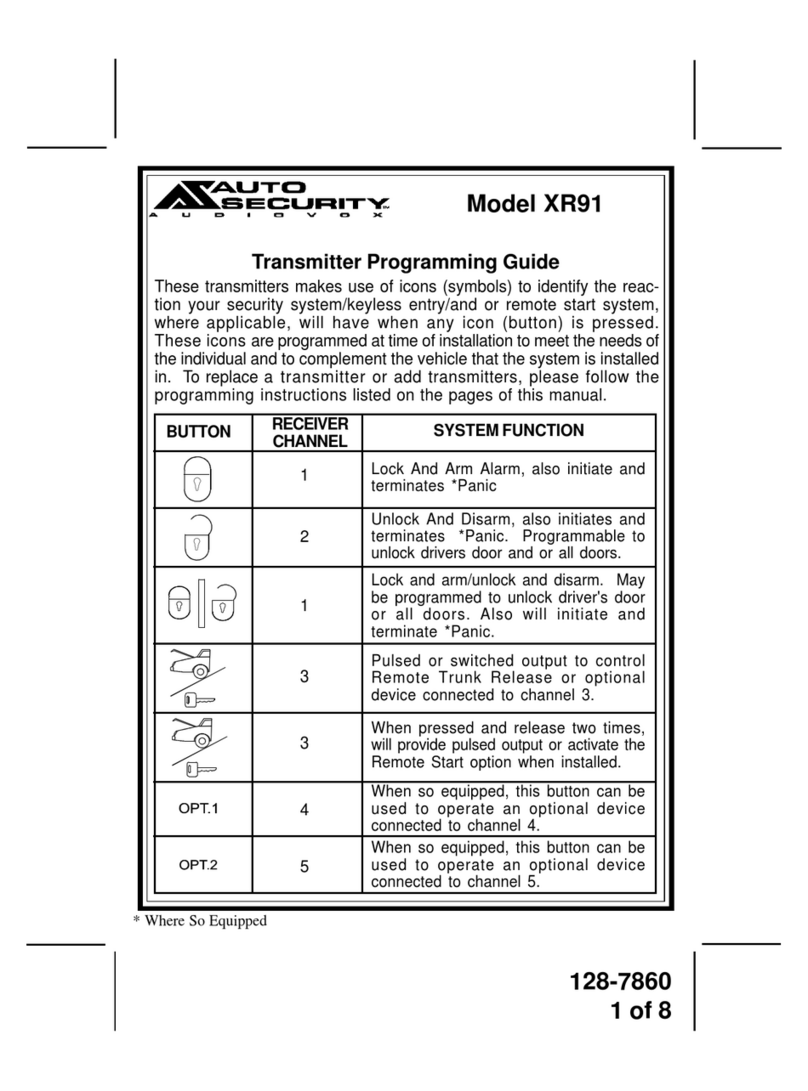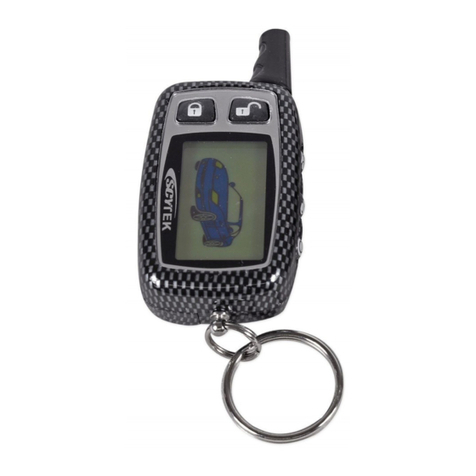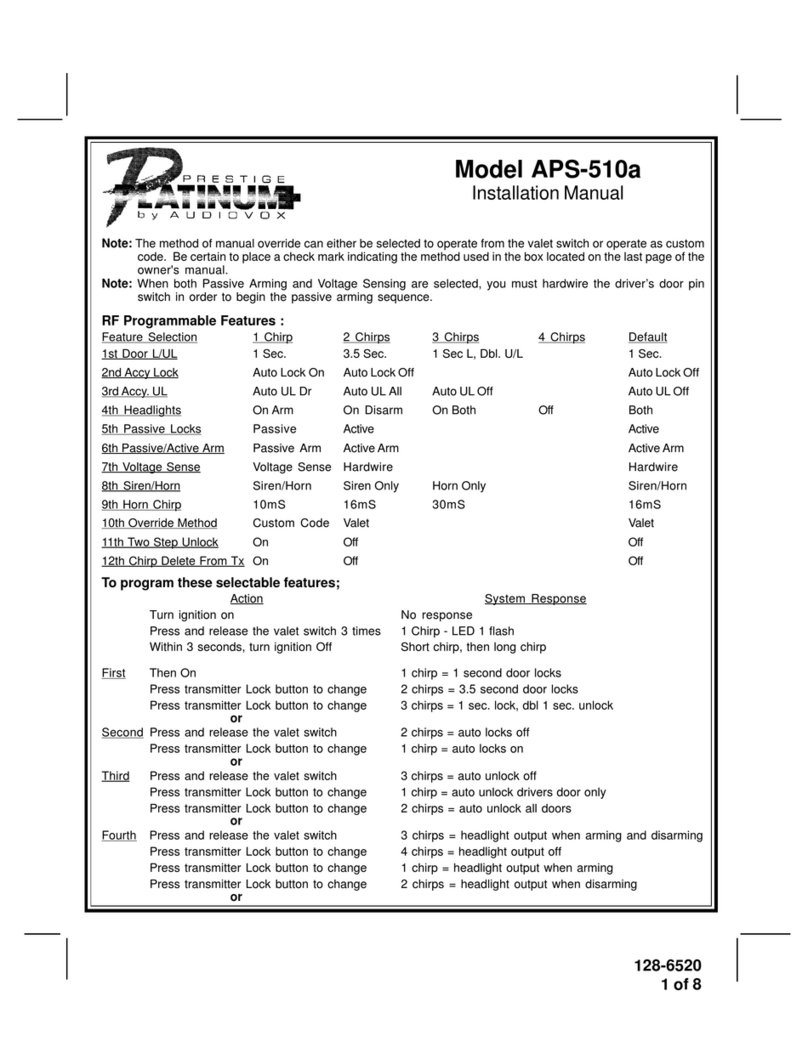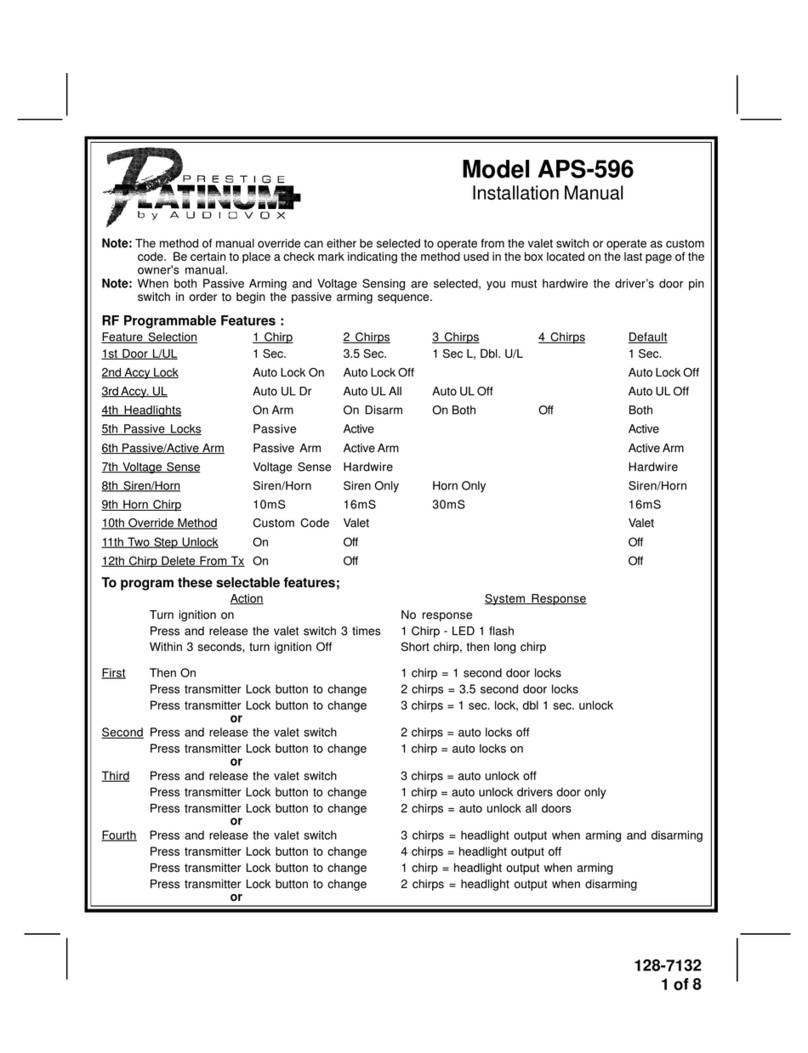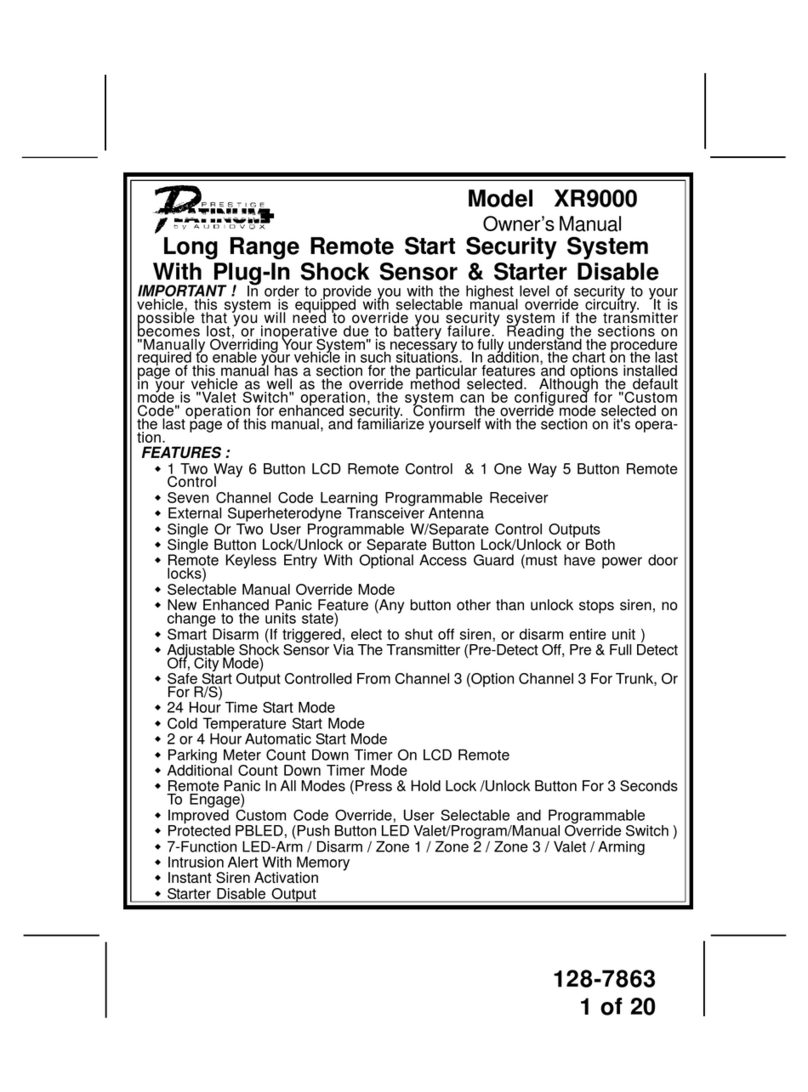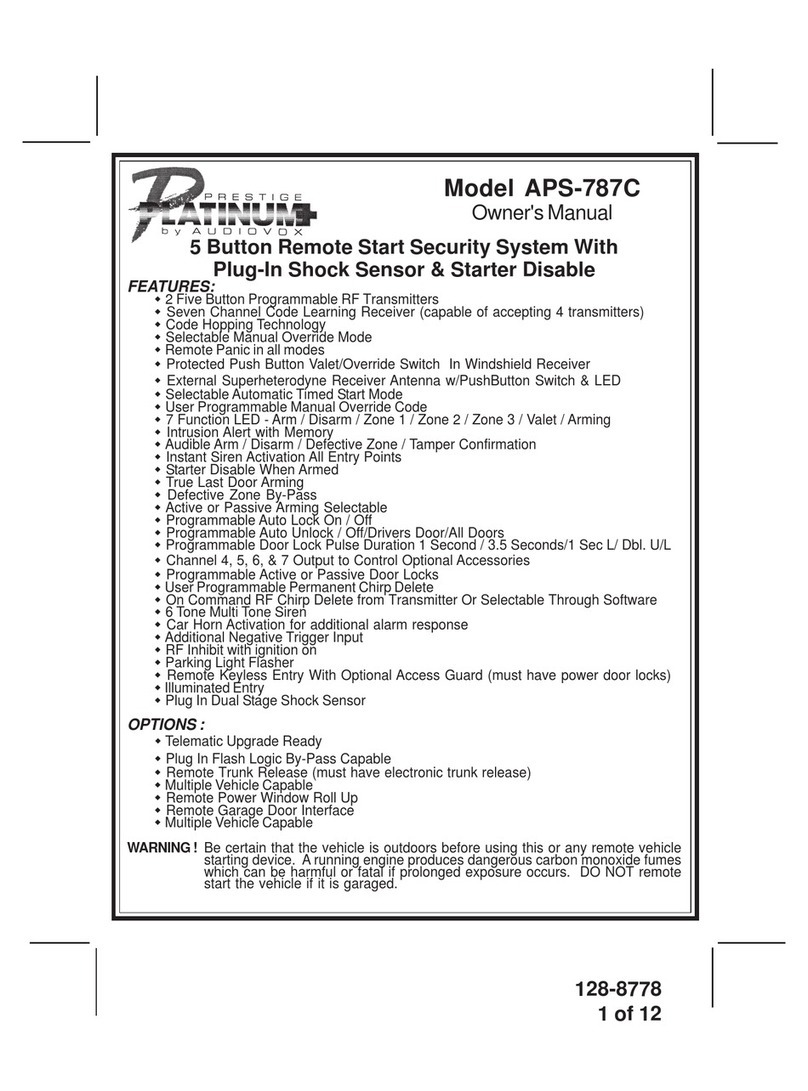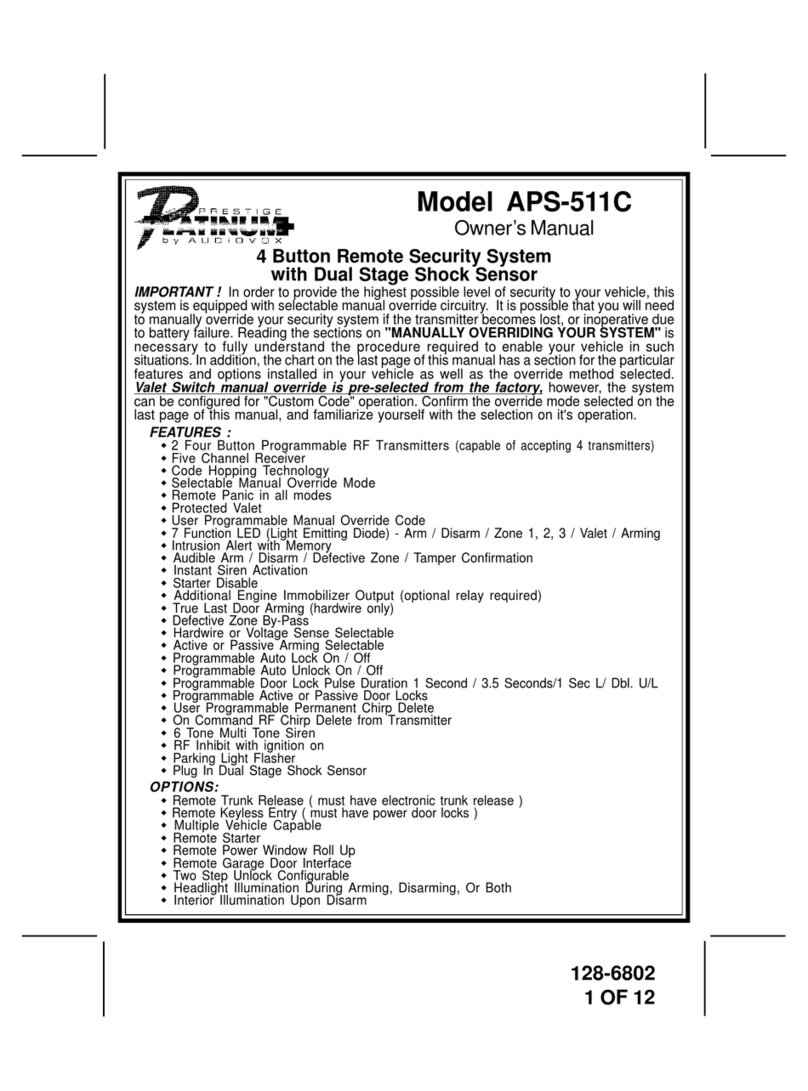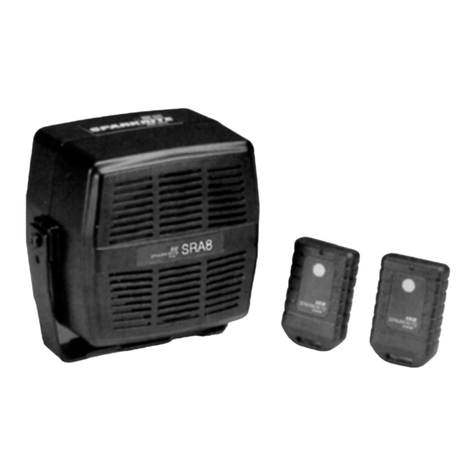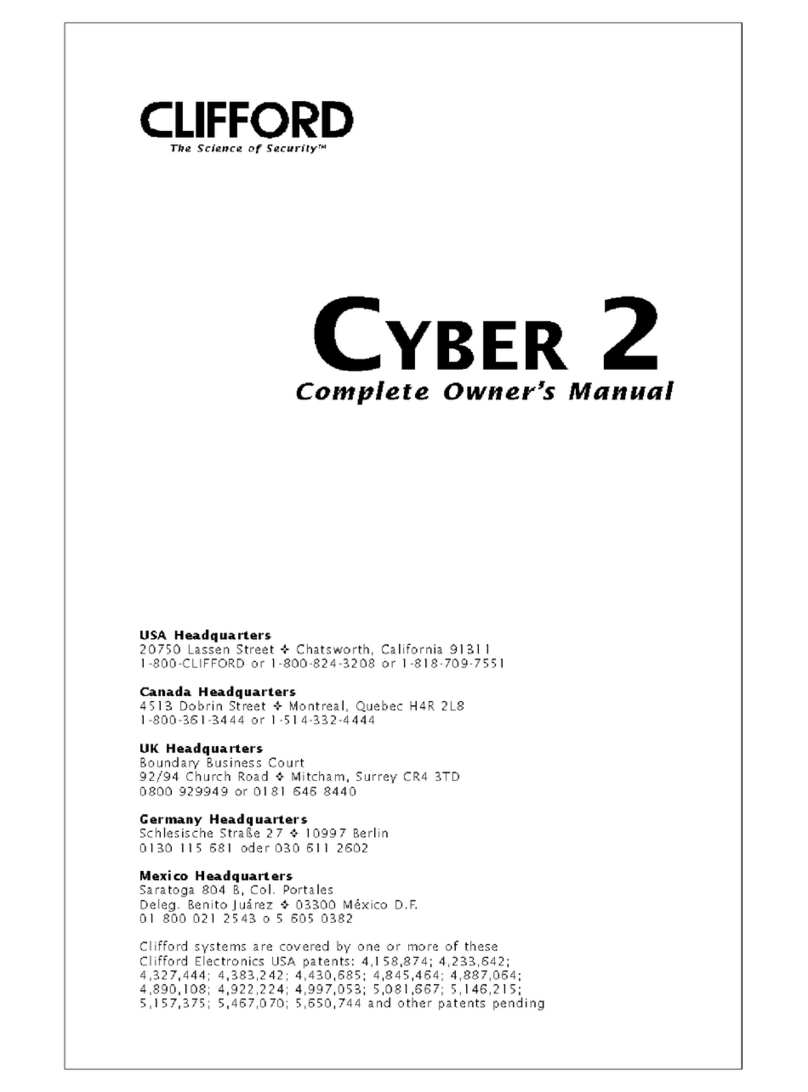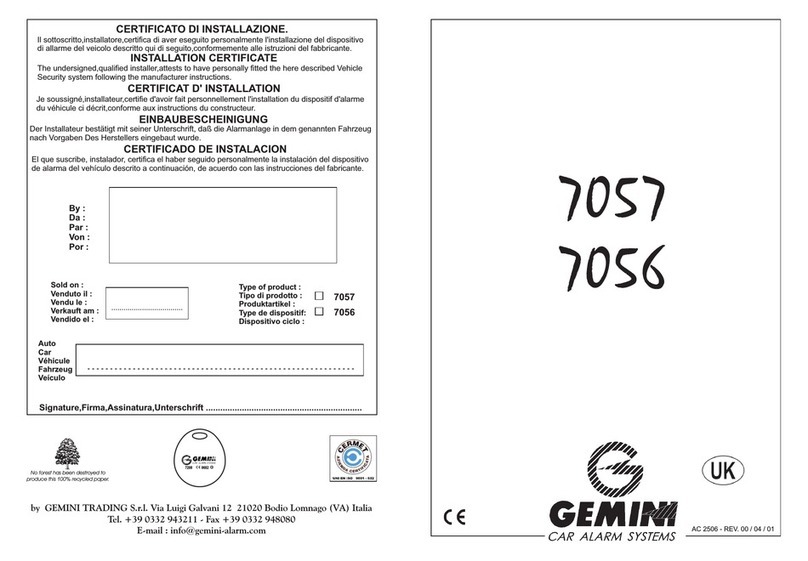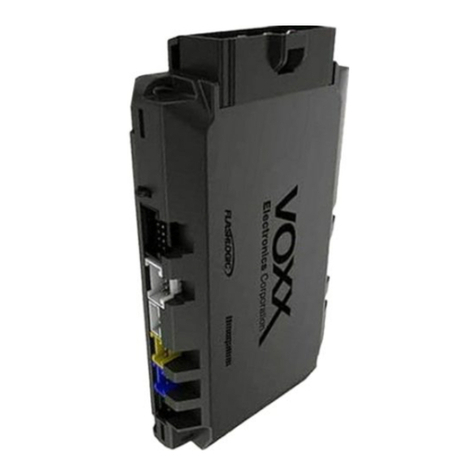
128-6795
7 of 8
vehicle side of the cut wire to terminal 87a of the optional relay added. Connect the red wire of the 3 pin
harness to terminal 86 of the optional relay added. Connect terminal 85 of the optional relay added to
chassisground. Mostvehiclesdoorlock/unlock motor legs rest at ground, and switch +12 volts to the door
lock/unlock motor legs for operation, if this is the case in the vehicle you are working on, connect the
remaining terminal, 87, to a fused + 12 volt source. In the rare instance that the vehicle door lock/unlock
motor legs rest at + 12 volts and switches ground to the door lock/unlock motors, connect he remaining
terminal, 87, to chassis ground.
The Red/Black wire provides a pulse ground output when the unlock button of the transmitter is pressed a
second time after disarming. Because the vehicle you are working on requires a positive pulse from the
factorydoorlockswitchtothefactorydoorlockcontrolrelay,youwillhavetoaddarelaytoinverttheoutput
polarity of this wire. Connect the Red/Black wire to terminal 86 of the optional added relay. Connect
terminal85&87toafuse + 12 volt source. Connect terminal30tothelowcurrentdoorunlockwirefrom the
factory door switch to the door unlock control relay.
Resistive Circuits, As Well As 4 Wire Polarity Reversal and 5 Wire Alternating 12 Volt
Door Lock Control Circuits
Theseapplicationsrequiretheuse of additionalcomponentswhichmayincluderelays, fixed resistors, orfor
convenience,theAS9159 Door LockInterface. RefertotheAUDIOVOX Door LockWiringSupplementand
orthe Audiovox fax backservice for information on yourparticular vehicle for properly connectingto these
types of circuits.
4 Wire Antenna Cable:
If you have not done so already, be certain connect the Red/Green/Black/Blue 4 wire transceiver cable
assembly to both the antenna assembly, and the mating connector of the control module or your transmit-
ters will not operate.
4 Pin Upgrade Telematic Module:
Red = + 5 Volts / Black = Ground / White = Data TX / Yellow = Data RX
Connect the 4 pin harness found in the Telematic one way module kit to the mating port on the PTUGM.
NOTE: If using the TWO WAY Telematic module, only Ground, TX, and RX are used on this port, the + 12 volt supply
for the two way module must be sourced separately or the unit will not operate.
COMPLETINGTHEINSTALLATION
NOTE: This unit has the ability to learn the dome light delay time, up to 60 seconds. If the vehicle has
delay interior lights, and you wish to avoid three chirp, defect zone, indication normally associated with
this type of interior light, we suggest you learn the interior light delay.
To learn the light delay, start with all doors closed:
(1) Use the transmitter to Lock / Unlock / Lock / Unlock / Lock / Unlock / Lock, the system.
The LED turns on solid to confirm the system entered the learn mode.
(2) Immediately open and close the door of the vehicle to initiate the dome delay.
TheunitwillmonitorthedoortriggerinputPositive,(Purple),andNegative,(Brown)whenactive.
When the dome light turns off, the unit will add 2 seconds then exit the learn mode.
(3) The LED will begin flashing the Armed indication indicating the unit has exited the learn mode and is
armed.
Adjusting the Shock Sensor: Ifused,thesensitivityofthepre-detectcircuitisautomatically set 30% less
sensitive than the full trigger circuit.
Usingasmallscrewdriver,gentlyturntheadjustmentscrew fully counterclockwise. (DO NOT over turn this
screw. Maximum rotation for this adjustment is 270°). Close the hood and trunk lids, and arm the alarm.
Wait6secondsforthe accessories trigger zone to stabilize, then firmly strike the rearbumperwiththeside
ofaclosed fist considering the amount of forcerequiredtobreaka window.
CAUTION: Never perform this test on the vehicle’s glass, as you may break the window.
Turn the adjustment screw clockwise (increasing sensitivity) about ¼ turn and re-test. Repeat this
procedure until thealarm sounds. Ultimately, onefirmstrike to therearbumperwillcause the alarmtoemit
pre-detectwarningtones.
WARNING ! Settingthesensitivitytoohighcancausefalse alarmsduetonoisevibrationsfrompassingtrucks
andheavyequipment. Todecreasesensitivity, turntheadjustmentscrew counterclockwise.
Wire Dressing: Always wrap the alarm wires in convoluted tubing, or with a spiral wrap of electrical tape.
Secure these looms along the routing using cable ties. This will ensure that the alarm wires are not
damagedbyfallingontohotorsharp moving surfaces in the vehicle.
Operation: Take a few moments to check off the appropriate option boxes in the owner’s manual, and to
fully explain the operation of the system to your customer.
Place the Valet Switch Tag and or the Remote Start Control Switch Tag on their respective switches and
point these out to the customer.
Page 7
